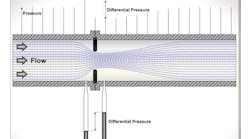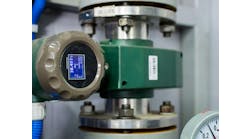Here we provide the key points for the final Part 3 of the recordings of my recent AIChE course sponsored by MYNAH Technologies. The focus here is on improving the performance of reactors, fermenters, crystallizers, evaporators, distillation columns, dryers and neutralizers.
The improvements typically can be done by the selection of PID options, pairing of variables, and the addition of PID controllers and simple standard function blocks. The configuration improvements can often be done and tested in a few days.
My recent AIChE St. Louis Section short course sponsored by MYNAH Technologies “Control Strategies to Improve Process Capacity and Efficiency” is viewable in three parts, each video about one hour in length on www.MYNAH.com by selecting “Videos” at the bottom of the webpage or clicking on the following direct links to each video:
Part 1: Process Dynamics Review, General PID Solutions, Feedforward and Ratio Control, Steam Systems
Part 2: Compressors, Jackets & Heat Exchangers, Valve Position Control, Continuous and Batch Control
Part 3 Key Points
3-1: Residence time control of a continuous reactor simply consists of the level setpoint being adjusted as the production rate and total feed rate change to keep constant the level mass divided by total flow that is the residence time as seen in slide 30. Keeping this residence time constant and large enough to give the desired conversion helps provide a more consistent product concentration. For batch reactors, this time is set by batch cycle time. Often, batches are held longer than necessary not taking advantage of research reports, prediction of end points and inferential measurements of conversion (slide 22).
3-2: The reactant ratio can be trimmed by the online measurement of the key excess reactant concentration in a recirculation stream that is needed to make sure there is just enough excess reactant and the right relative concentrations per the reaction stoichiometry.
3-3: The use of equal setpoint filters on the reactant feed setpoints (simultaneously adjusted for production rate or reactant concentration control) can provide synchronized changes in reactant feed rates preventing temporary unbalances. The use of a setpoint filter rather than via a lambda of the slowest loop for all loops enables each loop to be tuned with individual lambdas that provide the best disturbance rejection.
3-4: The use of a Valve Position Controller (VPC) with external reset feedback and fast setpoint up and slow setpoint down rate limits on the feed setpoint to be maximized (pushing a coolant valve to its maximum throttle position) can provide a smooth optimization, quick getaway for abnormal conditions and minimization of interaction. A feedforward signal representative of upsets can also be added to the VPC and temperature controller output to help it deal with abnormal conditions.
3-5: The use of external reset feedback with fast readback of the reactor coolant valve position by the secondary temperature controller along with aggressive tuning can minimize the oscillations from stiction and backlash in the coolant valve that would be propagated as feed changes by the VPC. See the March 2016 Control March 2016 Control magazine article “How to specify valves and positioners that don’t compromise control” and the associated white paper “Valve Response – Truth or Consequences”.
3-6: If excess reactants in the product stream are recovered and recycled as reactor feeds, a snowballing effect will occur if there is no fixed flow control in the path of the recovered to recycled reactant. For this reason, the reactor level controller does not manipulate the product discharge flow but manipulates the makeup leader reactant feed flow as seen on slide 31. The product stream discharge flow controller prevents snowballing. This flow sets production rate and can be gradually maximized. The follower makeup reactant feed flow is set via the ratio station. The makeup reactant flow setpoints are corrected by the amount of the respective recycled reactant flow to give a net makeup requirement. If the makeup and recycled reactant concentrations are different, the makeup flows need to be corrected accordingly. Hi accuracy density measurements by Coriolis mass flow meters can provide a fast inline measurement of reactant concentration for each feed.
3-7: For gas and liquid reactants with a liquid product (no gas product), a pressure controller manipulating the gas reactant feed flow will inherently add just enough gas reactant to maintain the reaction as shown in slide 32. The gas purge flow must be optimized to minimize the amount of gas reactant purged and minimize the buildup of inerts in the gas phase that would reduce the driving force for reactant mass transfer for reaction in the liquid phase. The liquid product stream is manipulated by the reactor level controller to provide residence time control. The liquid reactant feed flow sets production rate and can be maximized by a VPC.
3-8: For gas and liquid reactants with a gas product (no liquid product), a level controller manipulating the liquid reactant feed flow will inherently add just enough liquid reactant to maintain the reaction as shown in slide 33. The liquid purge flow must be optimized to minimize the amount of liquid reactant purged and minimize the buildup of inerts in the liquid phase that would reduce the driving force for reactant mass transfer for reaction in the gas phase. The gas product stream is manipulated by the reactor pressure controller. The gas reactant feed flow sets production rate and can be maximized by a VPC.
3-9: For liquid reactants and a primary liquid product and secondary gas co-product you have a condenser recycling as reflux the liquid product that appears in the gas phase as shown in slide 34. Here the control scheme is similar to what was shown in slide 32 but with more opportunities for VPC to push condenser and vent pressure valves besides the jacket coolant valve to their maximum throttle position to maximize production rate. The lowest of the VPC outputs is selected to prevent the furthest open valve from going too far open. This strategy also works for batch operations where there is the additional challenge of tight condenser temperature control for big differences in vapor load and loop dynamics as a result of different states in the batch operation. Adaptive control is often needed to provide aggressive control to catch up with an ever shifting load. Due to the heat transfer lag, the response is most likely near integrating. If precise valves and adaptive control can compensate for changes in dynamics including those occurring due to valve nonlinearity, the lambda arrest time should be reduced to be about two deadtimes to help catch up with the shifting load.
3-10: For a fluidized bed reactor with consequently gas reactants and a gas product, a temperature controller using the highest average bed temperature manipulating the leader gas reactant feed will inherently maximize production rate to limit of the cooling capability of the boiler feed water (BFW) coils being used to generate steam as seen on slide 35. Production rate is set by taking BFW coils in and out of service. A feedforward based on changes of coils in service can help with production rate changes. The averaging of temperature sensors in a cross section helps reduce noise from channeling and stratification. The use of the maximum average helps deal with hot spots that can cause byproduct formation. Since the residence time is so small and the reaction so fast, there is no inverse response from manipulating reactant feeds like there would be with liquid reactors making this a very viable strategy for temperature control. The thermowell design must minimize the thermal lags and the valve responses must be fast and precise for tightest control and best maximization of production rate.
3-11: Valve position control can optimize compressor or pump pressure, boiler pressure, chiller temperature, waste reagent or fuel use, reactor and column production rate and ratio control (feedforward accuracy) as summarized in the table on slide 36.
3-12: The key VPC features for best optimization, best disturbance rejection and least interaction is directional move suppression (up and down setpoint rate limits), external reset feedback (the essential feature for all of these opportunities), adaptive tuning, feedforward, and an enhanced PID as summarized in the table on slide 37.
3-13: The use of an enhanced PID with an online corn fermentable starch analyzer can provide an easily setup and tuned production rate controller for the front end of an ethanol plant that inherently maximizes ethanol yield per slide 38. The production rate controller provides an easy way of matching front end production to the capability of the back end. The PID gain can be simply set to be as large as the inverse of the open loop gain and the reset time as small as a few seconds.
3-14: Dissolved Oxygen (DO), pH and temperature of a bioreactor can be tightly controlled by the use of split ranged control with directional move suppression (made possible by external reset feedback) to prevent unnecessary crossings of the split range point in slide 39.
3-15: For mammalian bioreactors, there is an optimum ratio of the feed rates of sugar (glucose) and amino acid (glutamine). This ratio can be adjusted as shown in slide 40 by online measurements of these substrate concentrations provided by an at-line Nova Bioprofile Flex Analyzer that offers precise fast measurements of Glucose, Lactate, Glutamine, Glutamate, Ammonium, Sodium, Potassium, Osmolality, Cell Diameter, Cell Density, and Cell Viability. Since the analysis takes just a few minutes, an analyzer can be multiplexed to serve many bioreactors. The price is reasonable enough to even enable redundancy.
3-16: Bioreactor profile optimization can be added by computing the rate of change via the simple setup of the deadtime blocks as noted in Part 2 with a deadtime chosen to optimize the signal to noise ratio. The deadtime block inputs are viable cell concentration and product concentration to provide inferential measurements of cell growth rate and product formation rate, respectively. These rates that are the slopes of the batch profile of viable cell and product concentration that can be optimized as a function of batch time and used to predict batch end points.
3-17: A virtual plant can be setup and adapted rather easily as shown in slide 42. The virtual plant has the same setpoints and controllers as the actual plant. Given the controllers achieve good control keeping the process variables at their respective setpoints, differences between the virtual and actual plants show up as differences in the manipulated variables (e.g., manipulated process input flows). A model predictive control can be setup and models identified by just running the virtual plant. The adaptation can be used without changing anything in the actual plant (completely nonintrusive). When the adapted virtual plant has demonstrated its fidelity by matching manipulated flows, inferential measurements from the virtual plant can be used to provide optimization of the actual plant.
3-18: The virtual plant synergy enables the more effective use of modeling tools and advanced control tools as depicted in slide 43 leading to greater process knowledge, the key to PCI and increased process capacity and efficiency.
3-19: The virtual plant continuity offers the opportunity of a working installation for exploration, discovery, prototyping, deployment and training enabling continuous improvement as shown on slide 44. Hundreds of pages even if they could be written cannot describe the knowledge embedded and gained in a virtual plant. The August and September Control Talk Columns will give the views of DuPont and ProSys on this incredible often overlooked opportunity that becomes obvious when models become a working prototype.
3-20: There are many automation opportunities for batch operations as listed on slides 45 and 46 that may not have been realized. Many just involve configuration changes. All can be exploited with the greatest confidence and the least disruption by means of a virtual plant.
3-21: Crystallizer operation can be greatly improved by the use of a crystal size and concentration meter in a recirculation line as shown on slide 47 to optimize the setpoint of the crystallizer temperature controller. The secondary coil inlet temperature controller setpoint manipulated by this controller has a low setpoint limit to prevent cold spots. For batch operations and the startup of continuous operations, there is an optimum cooling curve that is the mirror image of the normal cooling rate curve. The coil inlet temperature must be higher in the beginning and then optimally decreased. The cooling rate is initially low to prevent the formation of small crystals (fines) that coat heat transfer surfaces and create product quality and recovery problems.
3-22: Double effect evaporators use an online measurement of product solids concentration often afforded by an accurate density measurement of a Coriolis Meter to correct the product discharge flow as shown in slide 48. The level controller on the second effect manipulates its feed flow accordingly that is then followed by a level controller on the first effect that manipulates its feed flow. A ratio controller maintains the necessary steam flow to feed ratio. A correction of the ratio can be greatly beneficial based on feed solids concentration measurement afforded by a Coriolis meter on the feed.
3-23: The best distillation column temperature point for control is the one that shows the largest and most symmetrical change in temperature for a change in the manipulated ratio (e.g., distillate to feed ratio). On slide 49 this corresponds to stage 5. This control point can provide tighter concentration control beyond considerations of linearity. The sensitivity to concentration changes of a distillate or bottoms product can be checked as shown on slide 50. The benefit in terms of disturbance rejection (e.g., feed increase or decrease) from the best control point is greater than might be expected as seen on slide 51. All of these tests can be done by high fidelity simulations.
3-24: For temperature control of either a single distillate or bottoms product, the ratio manipulated by the temperature controller is chosen for tightest concentration control provided the level controllers can do their job as shown on slides 52-55. For top temperature control, the preferred setup is the manipulation of the distillate to feed ratio. Tight distillate receiver level control is then used to translate manipulated distillate changes into reflux flow changes. This setup also provides some internal reflux control by inherently correcting reflux for changes in distillate temperature due to changes in operating or ambient conditions. For bottom temperature control, the preferred setup is the manipulation of steam to feed ratio to avoid the inverse response from manipulation of steam for sump level control. In all cases, feed rate is used to provide feedforward control by means of ratio stations.
3-25: For dryer control, the outlet temperature can be optimized by an inferential measurement of outlet moisture computed based on the temperature rise in the falling drying rate zone. After startup or batch operation when the product’s interior moisture has been depleted, dry spots start to appear on the particle surface. The driving force for evaporation based on decreases in the area of surface moisture starts to drop causing a rise in outlet temperature indicative of the falling drying rate zone. Since the inferential measurement uses outlet temperature, it must be filtered with a time constant greater than the reset time of the temperature controller to prevent positive feedback. The inferential moisture calculation can be corrected by product moisture measurement. Most dryers are significantly over drying the product. Optimizing the product moisture increases efficiency by reducing energy use and increases capacity by selling moisture as product.
3-26: For pH control, it all comes down to the slope of the titration curve, the degree of mixing, the precision of reagent addition and deadtime. Slide 57 shows how there are no straight lines on a titration curve, how pH can look like a runaway process and what is needed to get a good titration curve. Slide 58 shows how moving the setpoint to a flatter portion of the titration curve can not only save reagent but also reduce the pH oscillations seen from imperfect mixing and valve response. Slide 59 shows how two electrodes create more questions than answers and notes how critical middle signal selection of three electrodes is in terms of minimizing maintenance besides enabling tighter more reliable pH control. Slide 60 shows many of the mistakes made in pH system design and slide 61 shows how an inline system can be used on a vessel to provide fast pH control with oscillations smoothed out by the vessel volume. The tuning of this inline loop is easier due to the small deadtime. A signal characterizer for setpoints on the steep part of the titration curve can help enormously in reducing oscillations on the controller faceplate making the operators and process engineers much happier. Not shown is that the addition of a pH loop on the vessel can provide correction of the inline setpoint. By having this vessel pH loop manipulate the secondary inline pH loop rather than the reagent directly, the process gain seen by the vessel pH loop is simply just one isolating the nonlinearity of the titration curve from the vessel pH loop. Also, the danger of a controller gain being too low as well as too high is greatly reduced. This realization of the window of allowable gains for near integrating and integrating processes complicating pH control has not been discussed despite being a very real and pervasive problem when the vessel pH controller directly manipulates reagent flow and consequently is subject to the nonlinearity of the titration curve.
I will provide synergistic Key Points of my ISA Mentor Program WebEx Recordings in future Control Talk Blogs. Until then enjoy the dynamic world of process control using a virtual plant as your working prototype for education, exploration, discovery, prototyping, testing, deploying and training.




